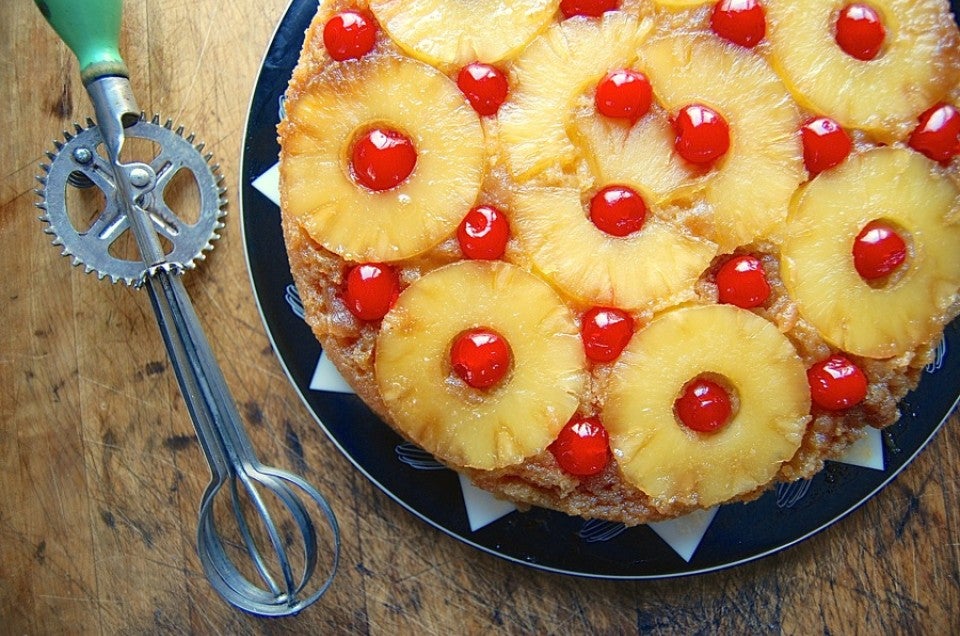


 The King Arthur Flour Company marks its 225th anniversary this year. And we're celebrating by exploring some of America's favorite recipes, decade by decade, starting in 1900. Join us on this fascinating stroll through American food history.
The King Arthur Flour Company marks its 225th anniversary this year. And we're celebrating by exploring some of America's favorite recipes, decade by decade, starting in 1900. Join us on this fascinating stroll through American food history.
The time: 1920-1929, the Roaring 20s (a.k.a. the Jazz Age), America's decade of riotous living. Scantily clad, cigarette-smoking "flappers" and their raccoon-coated boyfriends danced the Charleston and Black Bottom. Charles Lindbergh flew across the Atlantic, returning home to ticker tape and adulation. The country was in all-out party mode.
Alcoholic beverages became illegal in 1920, but the new law simply created new business: speakeasies (illegal liquor joints) proliferated. Law-breaking became socially acceptable, by ordinary citizen and "gangster" alike: in 1927, Al Capone earned $60 million on liquor sales alone.
It seemed the fun would never stop. Until suddenly, on October 29, 1929, it did. The stock market crashed, and the party was over.
Although the 1920s wreaked havoc with California's wine industry and liquor manufacturers, it was kind to convenience and packaged foods, which continued to grow. Wonder Bread, Girl Scout cookies, Kool-Aid, and Popsicles all made their first appearance during the decade. Jell-O, introduced in 1897, became a pantry staple, and by the 1920s was termed "America's most favorite dessert."
In 1925 New York City overtook London as the world's largest city, with 7.7 million residents. Two years later King Arthur Flour outfitted a truck with a calliope and our signature King Arthur on horseback. The truck, piping festive music, traveled the streets of New York for several years, drawing crowds wherever it went.
Most important to bakers everywhere, however, was an event that changed the course of American desserts forever.
Let's set the stage.
Back in 1906, James Dole had built a cannery in Honolulu, Hawaii, with newly invented machinery to peel, cut, and pack pineapples into the distinctive canned product we know today.
By 1923, Dole was the largest pineapple packer in the world.
Meanwhile, Americans were introduced to this "exotic" fruit via cookbook and magazine ads. By the 1920s, canned pineapple was a legitimate food trend. And in 1925, the Hawaiian Pineapple Company sponsored a recipe contest asking American housewives to submit their very best pineapple recipes.
The contest generated 60,000 entries. And 2,500 were for "pineapple upside-down cake."
How was this recipe born? No one knows for sure. Skillet cakes – featuring fruit and sugar in the bottom of a cast iron skillet, topped with cake batter and cooked atop the stove – were common. So it stands to reason that pineapple would eventually make its way into a skillet cake. Which it did, probably sometime during the 1920s.
Thankfully, the winning recipe in that contest has survived, and is still in print today. Flour, baking powder, salt, butter, eggs, sugar, milk, vanilla – so far, this is your typical cake. It's the pineapple, as well as the maraschino cherries (also introduced during the 1920s), that make this cake special – and historic.
I think I'll break out my vintage eggbeater for this one – as well as one of my favorite cast iron pans. I've got quite a collection, many dating from the 1800s. Well-loved (and equally well-used), I find these pans, non-stick from years of seasoning, ideal for baking.
The one I'm using here is labeled 9" - though it's 10 1/2" across the top, 9" at the bottom. If you have a similar cast iron skillet, use it. If not, a 9" square cake pan (at least 2" deep) should work as well – though you won't want to set it over a burner to melt the butter for the topping.
Start by preheating your oven to 350°F.
Whisk together the following:
2 cups (240g) King Arthur Unbleached All-Purpose Flour
2 teaspoons baking powder
1/2 teaspoon salt
Separate two large eggs. Whisk the egg yolks to combine; set them aside. Beat the whites, separately, until light and frothy. Yes, I really did use my hand beater! But I'm switching to my stand mixer for the rest of the batter prep.
Beat 8 tablespoons butter until soft and smooth. Gradually beat in 1 cup granulated sugar.
Add the 2 egg yolks, beating to combine. Then add 1/2 cup milk alternately with the flour mixture.
You'll have a fairly stiff batter. Fold in the beaten whites, then 1 teaspoon vanilla extract.
Next, the topping. Which starts out on the bottom.
Melt 2 tablespoons butter in your 9" skillet. Spread 1 cup brown sugar evenly over the butter. Add canned pineapple rings – as many as you can fit. I used an entire can, save for 2 slices.
Spoon the batter on top.
Wait – where are the cherries? Patience...
Bake the cake for about 45 minutes, until a toothpick inserted into the center comes out clean.
Remove the cake from the oven. Loosen its edges.
Now comes the upside-down part –
CAREFULLY turn the cake upside-down onto a serving plate. Make sure the plate is sturdy, and not ice-cold; a hot cast iron skillet and a cold, delicate plate is a mishap waiting to happen.
Lift the pan off the cake, scraping any pineapple or brown sugar from the pan onto the cake, if it sticks.
Ta-da!
Ah-ha, HERE are the cherries! This original recipe adds them after the cake is baked. Place the cherries artfully atop the warm cake, pressing them in gently.
Now you have to admit, that's one good-looking cake, right?
Two things I found interesting: first, the brown sugar syrup seeped down into the cake through the holes in the pineapple rings, and the space around them – space that might otherwise have been blocked by cherries, had I added them before baking as I usually do.
Second, the topping isn't as syrupy as you're probably used to. While it's still partially liquid (witness the seepage), it's also a bit crunchy around the edges; almost like streusel on a coffeecake. I find this new/original version very appealing!
Please bake, rate, and review this recipe for Original Pineapple Upside-Down Skillet Cake.
As always, my thanks to one of the best food history resources out there, foodtimeline.org. In addition, the original pineapple upside-down cake recipe is printed on a number of Web sites, including foodreference.com.
We hope you're enjoying our special 225th anniversary blog series, American Baking Down the Decades. Interested in more posts? See the following:
1900-1909: Birth of the Brownie
1910-1919: Packaged Cookies Catch On